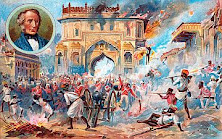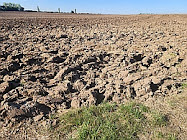Trafalgar Square : Military Men
What does Trafalgar Square mean to you? Maybe it's the Christmas Tree gifted by Norway every year. Maybe it is the fountains or nostalgia for Britain in its pomp.
 |
| Once a road. Now the Gallery terrace. |
 |
| The Pigeons were a curse |
In this and the posts that follow, I want to take a look at some of the prominent stone and bronze occupants of London. Who is there? And why? Is it because they are part of the story we tell ourselves about who we are? Or are they there because...well, they always have been, haven't they? I is not woke, as Ali G might say. Time has moved on and now I would rather that the Square honoured a more eclectic group of national icons.
In what follows, you will get my suggestions which of the current occupants should be retained, relocated or stored away. You will disagree, so this gives you something to argue about in the pub later. And to gauge the wider view, I will add a measure of celebrity by counting the number of London pubs named after each.
I have to start by tipping my cap to the well-known short fellow on the tall column. They put him up there to deter the hordes of selfie-seeking tourists who want to take their picture alongside him.

Mrs Nelson might attest that Horatio was no saint (he deserted her) and his views on issues like slavery would now be regarded as antediluvian. At school we were taught that after many other victories and the loss of a variety body parts, he destroyed Napoleon's fleet at Trafalgar (somewhere off Gibraltar), a battle that ruled out any chance of a French invasion while securing Britannia’s mastery (mistressy?) of the oceans. Rule Britannia and all that and a better record than Gareth Southgate’s. Nelson (not Gareth!) was shot and killed at the moment of victory, but as we shall see, picking an opportune moment to play goalkeeper to a sniper's bullet was not a prerequisite to be glorified by a statue here.
 |
| The Battle of Trafalgar |
The base of the column has four reliefs showing his key battles and his death
 |
| Death of Nelson |
Around the base are four lions. Of sorts. In fact, the bloke chosen to create them wasn't a sculptor but an artist and a pal of Queen Victoria and at that point had never actually seen a lion, so the zoo gave him a dead lion to use as a model, but he took so long over it, that the beast began to decompose. If it looks a bit odd, that is why.
I doubt these lions will suffer the same fate because, just to rub it in, they are made from the iron of French guns captured at the battle. Legend has it that if Big Ben chimes 13 times, they will come to life. Really.
Set into the wall under the National Gallery are three very appropriately smaller busts of early 20c. admirals, Jellicoe, Beatty and Cunningham. In World War One, Britain’s grand strategy hinged on effectively denying Germany access to the open seas. The one major effort they made to escape this blockade resulted in the huge British fleet and the smaller German fleet engaging in the pivotal Battle of Jutland.
Notwithstanding the odds, the British suffered more than the Germans and although long range guns meant that it was not 'up close and personal’ like Trafalgar, this became the bloodiest naval battle in our history. Nonetheless, by the end of it the Royal Navy had done enough to achieve its objective and the German fleet never ventured out again.
 |
| Jellicoe |
Neither Admiral covered himself in glory. But as Churchill, then First Lord of the Admiralty, put it; Jellicoe was ‘the only man on either side who could lose the war in an afternoon’. So he was justifiably cautious, but like most defensively-minded football managers, was criticised for it by the ‘up and at ‘em’ brigade. In contrast, during the battle, Beatty was commanding the vanguard of battle cruisers. He looks suitably imperious here, but was blamed for a series of tactical errors that led to the British losses. If you are interested, they are catalogued here: Beatty at Jutland.
 |
| Beatty |
Cunningham served as a junior officer in World War One and ended World War Two as First Sea Lord having spent much of it commanding the fleet in the Mediterranean, a dangerous and difficult job that he did well. Here he is, ears pinned for the sound of gunfire or to catch a gust of the trade winds. He has a small hotel named after him in Bracknell, very convenient for Legoland. Thus we honour our heroes.
 |
| Cunningham |
Nelson is Nelson. Just for saving us from a diet of cassoulet, croissants and continental philosophy, he deserves his place in the pantheon of national heroes. On the other hand, he was not at all woke and probably caused the awful Brexit debate. No matter, I found seven pubs named for him. Slam Dunk! So on balance he stays.
Two of the four plinths are occupied by far bigger memorials to commanders of the British armies in India. Comrade Ken famously said he didn’t have a clue who they were. Neither did I until I started this post.
 |
| Napier |
In the 1840s India was either being raped or civilised by the East India Company, depending on your point of view. General Sir Charles Napier, standing on a plinth in the southwest corner of the Square, came with a hard-earned reputation as a soldier and diplomat and ended up conquering and then governing Sindh, in what is now Pakistan. Legend has it that his official communique of this just said ‘Peccavi’ which as I am sure you know means ‘I have sinned’ in Latin. What a wit!
Soldiers are rarely cuddly but this one does seem to have more than the usual meagre military ration of common humanity. Earlier, in England, tasked with dealing with Chartist uprisings, he chose to use minimum force, partly because he agreed with the Chartists on many issues and thought that a root cause of the problems was 'Tory injustice and Whig imbecility'.
He was consistent in his aversion to slavery and as Governor abolished it in Sindh, to the chagrin of the traditional rulers and the joy of the Harem girls. And his view on the Indians as a whole was quite positive. In contradiction of his boss he suggested that ‘a bit less violence and arrogance there might be an investment’, failing which he foresaw trouble to come.
That proved prescient. Some years later there was a widespread mutiny in India and General Henry Havelock, who occupies the southeast plinth, found himself at the sharp end of the action.
 |
| Havelock |
He was a slight, fussy, stiff little man, not grand but an alumni of Dartford Grammar School, an 'honour; he shares with Mick Jagger. His reputation here was based on an early ‘success’ in recapturing a city called Cawnpore (now Kanpur); but sadly not until after all the British inhabitants were massacred.
He earned his perch here and a baronetcy later, through his fortitude in the siege of Lucknow, which was was besieged by a large Indian army. It was front-page news at the time. Havelock tried to break this and was failing until joined by Sir Colin Campbell. He was then in turn besieged but held out until, once again, relief arrived.
 |
| The Siege of Lucknow 1857 |
Shortly after he died of dysentery and exhaustion, so never got to enjoy being a 'Sir Henry' the honours bestowed on him. But I am sure his shade is delighted to find pubs named after him and roads from Singapore to Sunderland as well as in Lucknow of course. Also, until recently, one of the remote Andaman Islands. If you want to visit to honour his memory, you can take your pick Apparently his troops liked him but I doubt that India was so keen and he appears in the Flashman novels as ‘Gravedigger Havelock’. (In my book, Campbell deserves the military accolades more than Havelock but this is a capricious world and the only pub in London named after him is an excellent Irish establishment on Kilburn High Road).
 |
| Havelock Road, Sunderland |
 |
| ex-Havelock Island, Indian Ocean |
If you are a military junkie, you can find more recent names in Whitehall which I aim to cover in another post.
What makes a bad man? Do we judge them by the mores of their own age and background or our own? In Napier and Havelock we have two mostly forgotten figures in the crowd of imperial military deities. Notwithstanding their popularity at the time and the deficiencies of the native administrations, both were basically involved in killing people who were staking a claim to their own country.
Napier seems to have been a thoughtful man and although Havelock was also courageous, the vibes around him were not so sweet. Maybe he would tell you that 'he was only doing his job'. His statue, casually posed with a pigeon on his head, seems confident that it has the right to be there. But time moves on. For my money, Napier could be moved to a less prominent spot and Havelock should join Beatty in the cupboard. After all, he has enough other stuff named after him to give him a glimpse of immortality.
But wait! Another General has sneaked in, namely a slave-owning tax dodger who once served the Empire but allegedly hated the British so much that he swore never to set foot in London again. The statue standing in front of the National Gallery and carrying a bundle of 13 rather oversized fasces (which later became a fascist symbol) is General George Washington, who, as I am sure you know, was commander of the American forces in the War of Independence and their President. To humour his prejudices they shipped in some native soil for him to stand on.
 |
| Washington |
Notwithstanding his record, he scores a pub in Hampstead. They always did sing from a different song sheet thereabouts and I bet he wouldn't care to return the favour. I see no reason to give him the air. He should go, at least to somewhere less conspicuous. A wheelie bin would suit me but you might be more generous. If we have to have an American, can we have Roosevelt please?





Comments
Post a Comment
You can leave a message here or email me :
mail@mickbeaman.co.uk